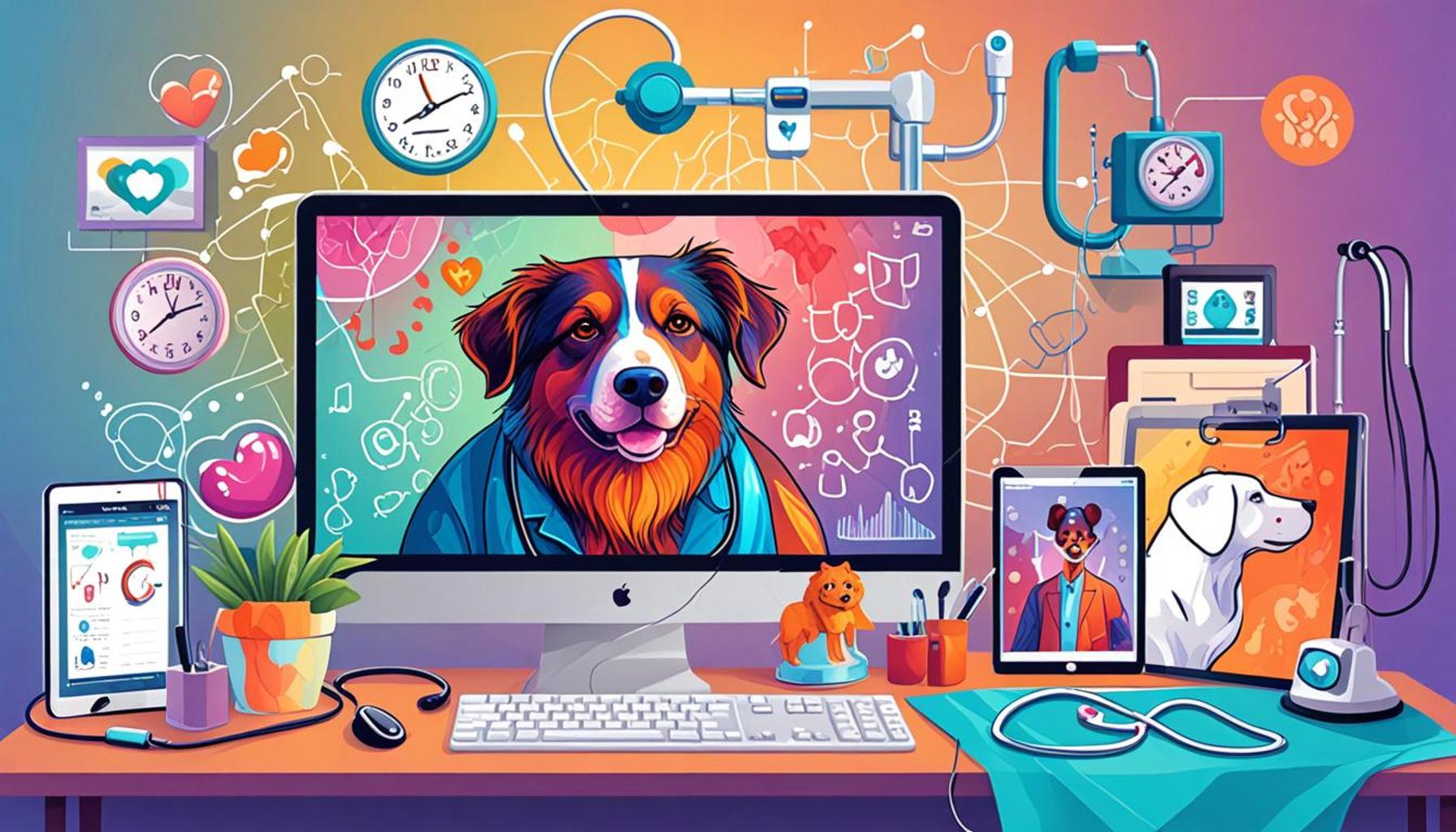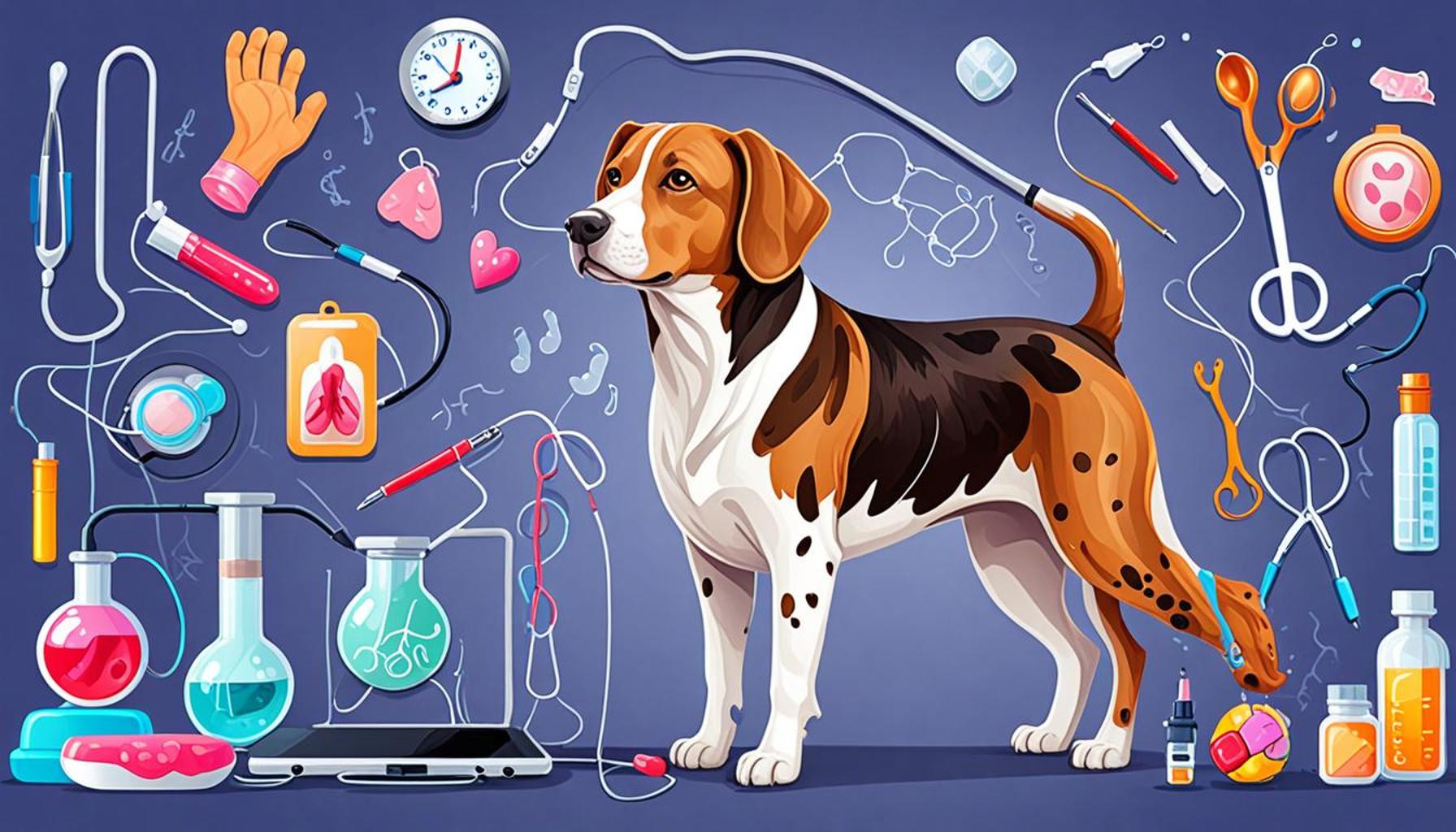How Telemedicine Is Changing Veterinary Health Monitoring

Revolutionizing Pet Care
In recent years, telemedicine has significantly transformed various fields, and veterinary health is no exception. This innovative approach offers veterinarians and pet owners new ways to monitor health, diagnose conditions, and provide treatment from the comfort of their homes. As pet ownership continues to rise in the United States, the demand for efficient and accessible veterinary care has never been greater.
Benefits of Veterinary Telemedicine
Telemedicine allows for quicker responses and proactive health management, reshaping the traditional veterinary practice model. Here are some key benefits:
- Convenience: Pet owners can easily consult vets without the stress of a clinic visit, freeing them from the hassle of transporting their pets, especially anxious animals. For instance, a busy parent can schedule a virtual consultation during nap time, which is often simpler than arranging an in-person visit, particularly when mobility is an issue.
- Reduced Costs: Virtual appointments can be less expensive than in-person visits. While each vet clinic has its pricing structure, many find that telehealth services are often offered at a reduced rate. This can make essential health consultations more accessible for pet owners who may be on a tight budget.
- Increased Access: Rural pet owners can connect with specialists who may not be available locally. For example, a dog owner in a remote town may require the expertise of a board-certified veterinary neurologist, who would otherwise be hours away. Telemedicine bridges this gap, making expert advice just a video call away.
This growing trend is changing the landscape of healthcare for pets, offering opportunities and challenges. As accessibility improves through advance technology, pet owners can track their companions’ health and receive timely advice, potentially catching issues before they escalate. Moreover, with the rise in various telehealth platforms, some even provide access to pet health records and virtual prescriptions, making health management simpler than ever.
However, as veterinary telemedicine continues to evolve, there are obstacles to navigate. For instance, not all conditions can be diagnosed remotely, and there remains a need for in-person consultations for thorough examinations. Additionally, regulations and licensure vary across states, creating a patchwork of policies that practitioners must adhere to. Despite these challenges, the integration of telemedicine within the veterinary field is paving the way for a more responsive and effective approach to animal health monitoring. As this trend progresses, pet owners are empowered to prioritize their pets’ well-being like never before, embarking on a new era of veterinary care.
LEARN MORE: Click here to discover how cat personality shapes adoption choices

Enhancing Pet Health Through Technology
As the veterinary landscape adapts to the digital age, telemedicine is becoming an essential tool for pet owners and veterinarians alike. The implementation of technology in veterinary health monitoring is changing the way pet care is approached, fostering a proactive environment for both preventative care and immediate health concerns. With just a smartphone or computer, pet parents can engage with veterinary professionals in real-time, facilitating critical health discussions that were once limited to physical visits.
How It Works
Telemedicine platforms for veterinary care typically offer an array of services, including video consultations, live chat, and even email correspondence. These platforms are designed to provide support across various health monitoring aspects:
- Consultations: Pet owners can schedule appointments for various issues ranging from behavioral consultations to urgent symptoms. For instance, a pet owner observing lethargy in their dog can seek an immediate evaluation without the long waiting times characteristic of traditional clinics.
- Follow-ups: After an initial diagnosis, telemedicine allows for efficient follow-up appointments, making it easier for pet owners to report changes or monitor recovery without additional stress. This continued engagement can significantly improve health outcomes and ensure that treatment plans are effective.
- Preventative Care: Telemedicine can significantly enhance preventative care by helping to track routine vaccinations and wellness checks. For example, a veterinarian can remind pet owners of vaccination schedules through digital notifications, ensuring that pets stay up to date on their preventative treatments.
Moreover, with the integration of wearables and smart collars that monitor pets’ vital signs and activity levels, data can be shared with veterinarians seamlessly. This capability empowers both pet owners and veterinary professionals to make informed decisions regarding health management, leading to timely interventions when issues arise. Studies indicate that early detection of health problems can substantially improve treatment outcomes, extending a pet’s quality of life.
In the United States, where pet ownership statistics reached an astonishing 70% of households, the ability to provide care through telemedicine can alleviate burdens on veterinary practices. This allows veterinarians to focus on urgent cases while streamlining routine care through digital consultations. As more pet owners embrace this innovative approach, it sparks a greater demand for resources and expertise in telehealth practices, expanding the role of technology in animal welfare.
While the benefits of veterinary telemedicine are clear, its effectiveness hinges on the systematic adaptation of both veterinarians and pet owners to these technologies. Ongoing education about the available tools and services will be crucial in maximizing the potential that telemedicine holds for the future of veterinary health monitoring. As advancements continue, the bridge between pet owners and veterinary care becomes less daunting and more accessible, heralding a new era of pet health management.
| Advantage | Description |
|---|---|
| Accessibility | Telemedicine provides pet owners with easier access to veterinary care without the need for travel, making it a convenient option for routine check-ups and non-emergency consultations. |
| Early Diagnosis | Through remote monitoring and consultations, veterinarians can identify potential health issues before they become serious, allowing for timely intervention and better health outcomes for pets. |
| Cost-Effectiveness | Remote consultations often come at a lower cost compared to in-person visits, reducing overall veterinary expenses for routine care. |
| Time Efficiency | Pet owners save valuable time by not waiting in clinics, which enhances their experience and allows for quicker veterinary advice. |
Telemedicine’s effect on veterinary health monitoring is revolutionary. With advancements in technology, veterinarians can now provide personalized care, making pet wellness more accessible and proactive than ever before. As pet owners continue to embrace these services, the potential for improved health outcomes is substantial, ensuring pets receive the best possible attention at a fraction of traditional costs and time. Through this innovative approach, veterinary health monitoring is evolving to meet the modern needs of both pets and their owners.
DON’T MISS OUT: Click here to discover the benefits of pet adoption
Addressing Challenges and Concerns
While telemedicine presents a wave of innovative solutions for veterinary health monitoring, it also surfaces a set of challenges that must be navigated with care. Understanding these hurdles is essential for maximizing the potential of veterinary telehealth and ensuring comprehensive care for pets.
Security and Privacy Issues
As veterinarians increasingly rely on digital platforms, concerns regarding the security and privacy of sensitive information arise. Just like any other facet of healthcare, the transfer of pet health data necessitates stringent measures to protect this information from potential breaches. The implementation of secure communication channels and protocols, as well as adherence to guidelines similar to HIPAA for human health records, becomes crucial. Only with effective safeguards in place can pet owners feel secure in sharing their pet’s health information online, thus fostering a more transparent and trusting relationship with their veterinary care providers.
Limitations in Diagnostic Capabilities
Despite its advantages, telemedicine cannot replace the comprehensive diagnostic capabilities offered in traditional veterinary clinics. Certain conditions require physical examinations, laboratory tests, or imaging to arrive at the correct diagnosis. For instance, symptoms of a gastrointestinal issue may be similar to those of a simple orthopaedic complaint. While a telemedicine interaction could begin the assessment, the veterinary expert may ultimately recommend an in-person visit for further evaluation. In this context, telemedicine functions as an invaluable adjunct to traditional veterinary care rather than a complete substitute, allowing for quick guidance while preserving the option for in-depth diagnostics as needed.
Access and Equity Considerations
The accessibility of telemedicine is another critical factor. Pet owners living in rural or underserved areas may lack reliable internet connectivity or technological resources necessary for effective communication with veterinary professionals. According to the American Veterinary Medical Association (AVMA), this discrepancy can exacerbate existing inequalities in pet healthcare. Addressing these challenges means developing resources, like grants for low-income families to access telehealth services or mobile veterinary clinics that travel to remote locations. Such strategies ensure that all pet owners, regardless of their geographic circumstances, can benefit from telemedicine innovations.
Integration with Traditional Care
For telemedicine to thrive as a component of veterinary health monitoring, seamless integration with traditional care systems is necessary. This means that veterinary practices need to adopt telemedicine platforms that allow for continuity of care. Existing electronic health records (EHR) systems must be capable of accommodating telemedicine activities, ensuring that any information gathered during virtual consultations is accurately reflected in a pet’s ongoing health record. By creating a holistic picture of a pet’s health journey, veterinarians can more effectively manage treatment plans, track progress, and make informed recommendations.
Incorporating telemedicine into the broader veterinary care model signifies a shifting paradigm in pet healthcare delivery. As adoption grows among veterinary professionals and pet owners, evolving practices should focus on balancing technology with the irreplaceable elements of hands-on examinations and relationship-building that characterize effective veterinary care.
LEARN MORE: Click here for effective training tips
Conclusion
As we delve into the transformative landscape of veterinary care, it is evident that telemedicine is not merely an accessory, but a pivotal force in enhancing health monitoring for pets. This innovative approach offers a multitude of benefits, including increased accessibility, convenience, and timely intervention for pet owners and their beloved animals. Nevertheless, it is critical to address the security and privacy concerns surrounding digital communications and to ensure that established protocols are in place to protect sensitive health information.
The limitations of telemedicine, particularly in diagnostic scenarios, underscore the necessity for a balanced integration with traditional veterinary methods. While virtual consultations can initiate assessments and provide guidance, physical examinations will still be essential for many ailments. Thus, a collaborative model of care will yield the best outcomes, allowing for seamless transitions between digital interactions and in-person visits when necessary.
Equity in access remains a paramount consideration in leveraging telehealth for pets. Innovative solutions, such as mobile clinics and grants for underserved communities, are crucial in breaking down barriers to quality veterinary care. Furthermore, as telemedicine emerges as a staple in the veterinary toolkit, vet practices must evolve to create systems that not only accommodate remote care but also maintain a comprehensive view of a pet’s health journey.
In conclusion, the potential of telemedicine to change veterinary health monitoring is immense, and continued advancements in technology and accessibility will shape the future of pet healthcare. As stakeholders in the veterinary community embrace these changes, the synthesis of telehealth and traditional methods will forge a new era in the compassionate care of pets across the United States.


